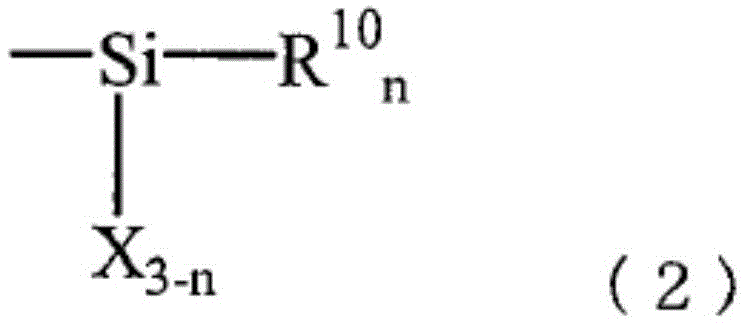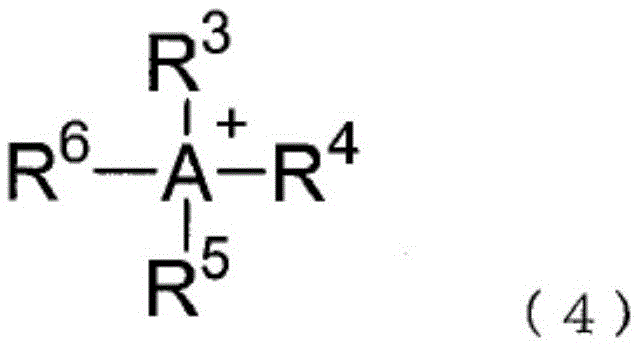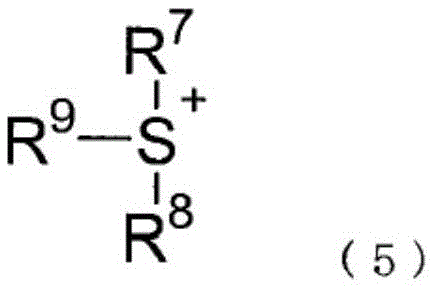Adhesive composition
A composition and adhesive technology, applied in the direction of adhesives, adhesive types, other rubber adhesives, etc., can solve the problems of reduced bonding strength, insufficient improvement of bonding strength, cold/heat cycle resistance, etc. Excellent adhesion durability, excellent curability, and good storage stability
- Summary
- Abstract
- Description
- Claims
- Application Information
AI Technical Summary
Problems solved by technology
Method used
Image
Examples
Embodiment
[0115] Although this invention is demonstrated more concretely based on an Example, this invention is not limited to this. In addition, in the following, parts and % are based on mass unless otherwise specified.
[0116] 1. Evaluation method
[0117] (1) Molecular weight
[0118] Device: Alliance2695 (manufactured by WATERS Corporation)
[0119] Column: 2 TSKgelSuperMultiporeHZ-H and 2 TSKgelSuperHZ-2500 connected in series (manufactured by Tosoh Corporation)
[0120] Column temperature: 40°C
[0121] Mobile phase: tetrahydrofuran 0.35ml / min
[0122] Detector: RI
[0123] The molecular weight measured by GPC was converted based on the molecular weight of polystyrene.
[0124] (2) Bonding speed
[0125] The adhesion speed was measured in the environment of 23 degreeC and 60 %RH based on JISK6861 "the test method of the alpha-cyanoacrylate adhesive agent." The test pieces used for the measurement are as follows.
[0126] ・ABS: ABS resin manufactured by UMGABS Co., Ltd.,...
Synthetic example 1
[0138] Synthesis example 1 (methyl tri-n-octyl ammonium trifluoromethanesulfonate)
[0139] In a 50ml eggplant type bottle, 4.041g (10.00mmol) of methyl tri-n-octylammonium chloride (reagent) and 13.2g (20mg chemical equivalent), and toluene 25ml, stirred at room temperature for 48 hours. After removing the ion exchange resin by filtration, 1.501 g (10.00 mmol) of trifluoromethanesulfonic acid was added dropwise to the obtained product under ice cooling. The ice bath was removed and stirring was continued for another 12 hours at room temperature. The reactant was washed three times with 25 ml of ion-exchanged water, and the resulting product was dried over anhydrous sodium sulfate, and then concentrated under reduced pressure. The resulting residue was dissolved in 25 ml of methanol, and insoluble matter was removed by filtration. The solvent was distilled off under reduced pressure to obtain 5.022 g of light yellow semi-solid ( salt A).
[0140] 3. Manufacture of adhesi...
Embodiment 1
[0142] 20 ppm of sulfur dioxide, 1000 ppm of hydroquinone, and methanesulfonic acid (manufactured by Kishida Chemical Co., Ltd., pKa=-0.6 [25°C]) 0.005 parts. After dissolving 20 parts of the elastomer shown in Table 1 (ethylene / methyl acrylate copolymer, manufactured by DuPont, trade name "VamacG"), the amount shown in Table 1 was mixed with vinyl methoxy Silane (manufactured by Momentive Performance Materials Inc., trade name "A-171") 1.5 parts by mass of a polymer having a hydrolyzable silyl group (manufactured by Kaneka, trade name "SilylSAT200"), at a temperature of 15 to 30°C The mixture was stirred for 10 minutes to prepare an adhesive composition. The obtained adhesive composition was subjected to the above evaluation. The results are shown in Table 2.
[0143]
PUM
| Property | Measurement | Unit |
|---|---|---|
| size | aaaaa | aaaaa |
| specific surface area | aaaaa | aaaaa |
| specific surface area | aaaaa | aaaaa |
Abstract
Description
Claims
Application Information
 Login to View More
Login to View More - R&D
- Intellectual Property
- Life Sciences
- Materials
- Tech Scout
- Unparalleled Data Quality
- Higher Quality Content
- 60% Fewer Hallucinations
Browse by: Latest US Patents, China's latest patents, Technical Efficacy Thesaurus, Application Domain, Technology Topic, Popular Technical Reports.
© 2025 PatSnap. All rights reserved.Legal|Privacy policy|Modern Slavery Act Transparency Statement|Sitemap|About US| Contact US: help@patsnap.com



